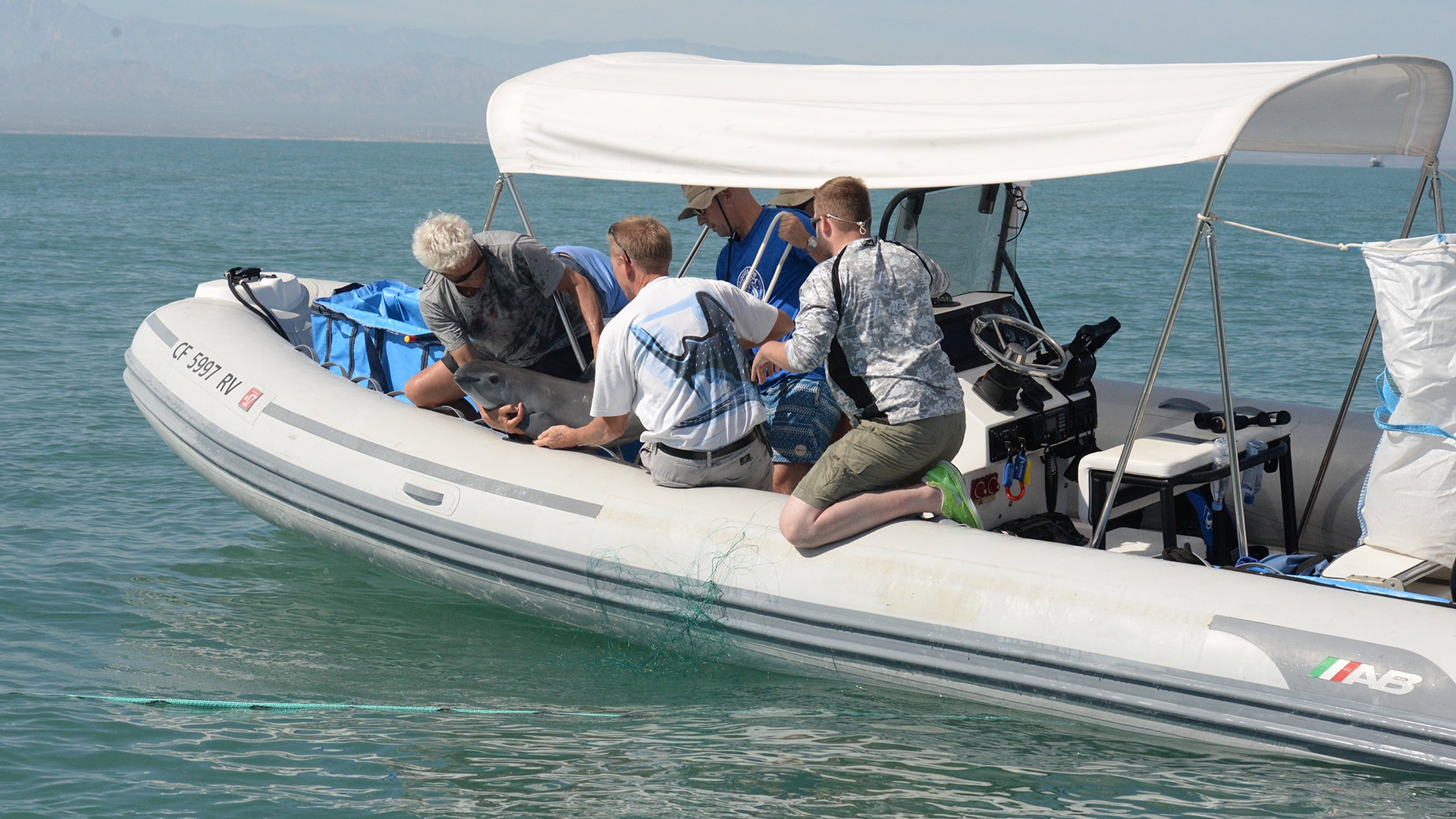BBC Earth newsletter
BBC Earth delivered direct to your inbox
Sign up to receive news, updates and exclusives from BBC Earth and related content from BBC Studios by email.
Animals
In a small strip of sea in Mexico’s Gulf of California lives an animal that can be found nowhere else on Earth.
This area, measuring just 2,235 square kilometres, is home to the vaquita porpoise, the most endangered marine mammal on the planet.
The vaquita, whose name means ‘little cow’ in Spanish, are shy and non-migrating animals that measure no more than 1.5 metres (5 feet) in length, with females slightly larger than males. In the late 1990s, their population was estimated to be around 567. Now, it’s believed that there are just 10 of them left.
Cynthia Smith is the Executive Director of the National Marine Mammal Foundation. Speaking in the BBC Earth podcast, she says gill nets are responsible for the rapid decline in the vaquita population.

“There have been different types of gill net used, but the one that is most problematic today is due to an illegal fishery that is for the totoaba,” she says.
To understand how we’ve reached the stage where this marine mammal could become extinct in the next year, we need to travel East to a black market somewhere in Asia, where the swim bladder of a totoaba can sell for up to £15,000.
Given the high cost on the black market, totoaba swim bladders are often bought as a gift or investment. They are also used in traditional Chinese medicine, with some believing they can cure ailments such as arthritis, though these beliefs have no scientific basis.

Like the vaquita, totoaba are a critically endangered species. In 1976, the fish was added to the Convention on International Trade in Endangered Species of Wild Fauna and Flora (CITES) meaning the trade in its parts is illegal.
Yet despite this, illegal trading of totoaba swim bladders is a business continuing to boom. In June 2020, HK$ 25 million (almost £2.5m) worth of totoaba swim bladders were seized by customs officials, representing around 270 of these protected marine mammals.
And in the small spot where totoaba are found and captured, the vaquita porpoise become caught in the same gillnets, where they drown.
For Cynthia, and leading world scientist of vaquita, Lorenzo Rojas-Bracho, we’re now at a critical point if we want to save the vaquita.
Geneticists are saying the species are strong enough to come back if we just remove the threats."
Yet in this line of work, it is not just the vaquita that are at risk. In their attempts to save the heavily endangered species, Cynthia and Lorenzo have faced intimidation from cartels, including threats to burn down their facility and inflict physical violence on them.
Despite this, they continue. But time is running out, and the usual routes of conservation are not an option.
In 2017, after a week of trying, a team of 90 experts led by Cynthia and Lorenzo finally captured two female vaquitas. The goal was to help the species survive in captivity, but one of the vaquitas was released early after showing signs of distress. The other, however, appeared content.

“We were just happy that we caught the animal that it was impossible to capture. It was a very, very joyful moment,” says Lorenzo.
Yet shortly after capture, their joy turned to despair.
“Not long after we introduced her into the enclosure, she started to show signs of distress and we made the decision to release her. Unfortunately, during the release she was clearly in distress and she circled back to us and at that point needed emergency care,’ says Cynthia.
‘We did everything we could for her, but unfortunately we lost her.’
The condition is called capture myopathy and a number of other animals, such as deer, rabbits, and some birds, are also susceptible to it, no matter how much care their captors show. It’s a state of stress that the animal will enter into, where their blood pressure goes up and their hearts begin to fail.
The team managed to capture tissue biopsies containing living cells from the vaquitas, which are now stored in a frozen zoo. It’s a step that will help us better understand the species, but it is unlikely to save it.
I’m hoping the vaquita can help shake the shoulders of our humanity.”
So, are we about to see the end of this rare marine mammal? And as we enter into a sixth mass extinction, with many other species declining at a rapid rate, is it worth putting resources and money into trying to save this single one? The rescue attempt in 2017 alone cost US$5 million (£3.6m).
For Cynthia, it’s not a question of putting all resources into a single species. The challenge, she says, is finding a way to build an ecosystem that works for everyone.
“The reason that this animal story is so important is because it’s just one of so many species in the same spot, and there are paths and opportunities we have to reverse the damage. The vaquita is a really good example of how humans have pushed a species to the brink of what they can handle,” she says.
“I’m hoping the vaquita can help shake the shoulders of our humanity.”
Featured image © VaquitaCPR